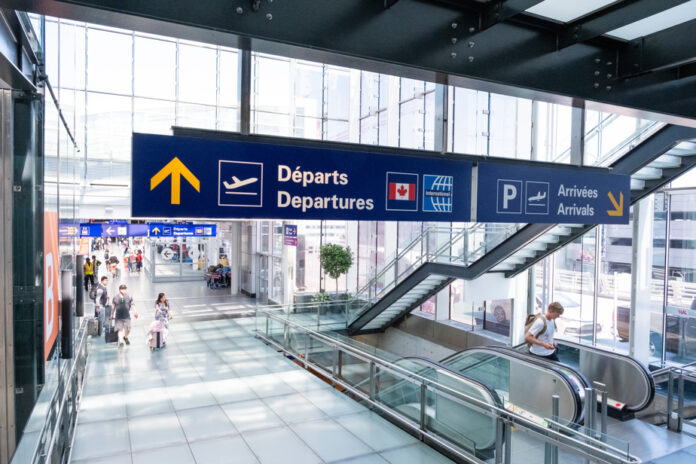The project to connect Montreal-Trudeau to VIA Rail’s Dorval station is not dead, assures the airport, in reaction to the publication of a federal report which assesses Ottawa’s options in the matter.
The roughly 700 meters that separate the two transit hubs have been causing headaches for public transport planners for decades. This link is all the more important as the high frequency train (TGF) wanted by Ottawa should stop at Dorval.
The federally commissioned document concludes that extending the REM to the train station would cost more, but would attract more passengers than an automated shuttle between the station and the terminal.
The report also mentions, without quantifying it, the scenario of an underground conveyor belt, as well as a simple improvement in bus service.
“All four ideas are reasonable options for the transportation link,” the federal government concluded in releasing the document. This one is dated May 2022 and was posted online by Ottawa several months ago, but seems to have gone unnoticed since.
But for Aéroports de Montréal (ADM), one option seems to be less reasonable than the others: the extension of the REM.
“The REM station is currently under construction and is designed to be a terminal station of the REM network,” communications director Anne-Sophie Hamel said in an email.
“Putting into service a people mover or an automated shuttle, for example, would achieve the desired objectives of intermodality and decarbonization,” she added.
Above all, Ms. Hamel confirms the renewed desire of the airport authority to establish a connection between the railway station and its facilities.
In 2021, when ADM was in a very bad financial position due to the COVID-19 pandemic, its big boss Philippe Rainville had relegated the project to the Greek calendar. Such a bond will be “perhaps for another generation,” he told La Presse. “We cannot immediately consider a link between the two unless a white knight brings us a few hundred million dollars. It won’t be in our boxes for at least a decade. »
Two years later, the discourse has completely changed.
“ADM has always maintained that it would be necessary to ensure a link between the VIA station and the terminal,” assured Anne-Sophie Hamel, indicating that her boss’ statements simply established that the REM station project was a priority. .
Transport Canada and the office of the federal transport minister had not commented at the time of this writing.
The report commissioned by Ottawa from QMOT Partnership establishes the advantages and disadvantages of each mode of transport.
Thus, the REM extension provides a connection requiring “no transfers required for passengers traveling from the pole beyond YUL”, as well as a “high quality passenger environment”, but requires a lot of capital and coordination.
Building a new transportation system offers “benefits from a reliability standpoint, as users in the airport area would not be impacted by disruptions”, but would require “specialist maintenance personnel” and offer little of capacity. The report estimates the travel time between the station and the airport at three minutes.
In this scenario, “it was determined that a cable system was the technology of choice”, in particular due to the rigors of the Quebec winter, the document states. A “traffic-separated aerial” system that “could easily be extended to connect the hub to various locations in the airport area, including the terminal building, parking areas and hotels”.
This is notably the technology used for transfers between terminals at Toronto Pearson airport, as well as at Birmingham airport in the United Kingdom.















